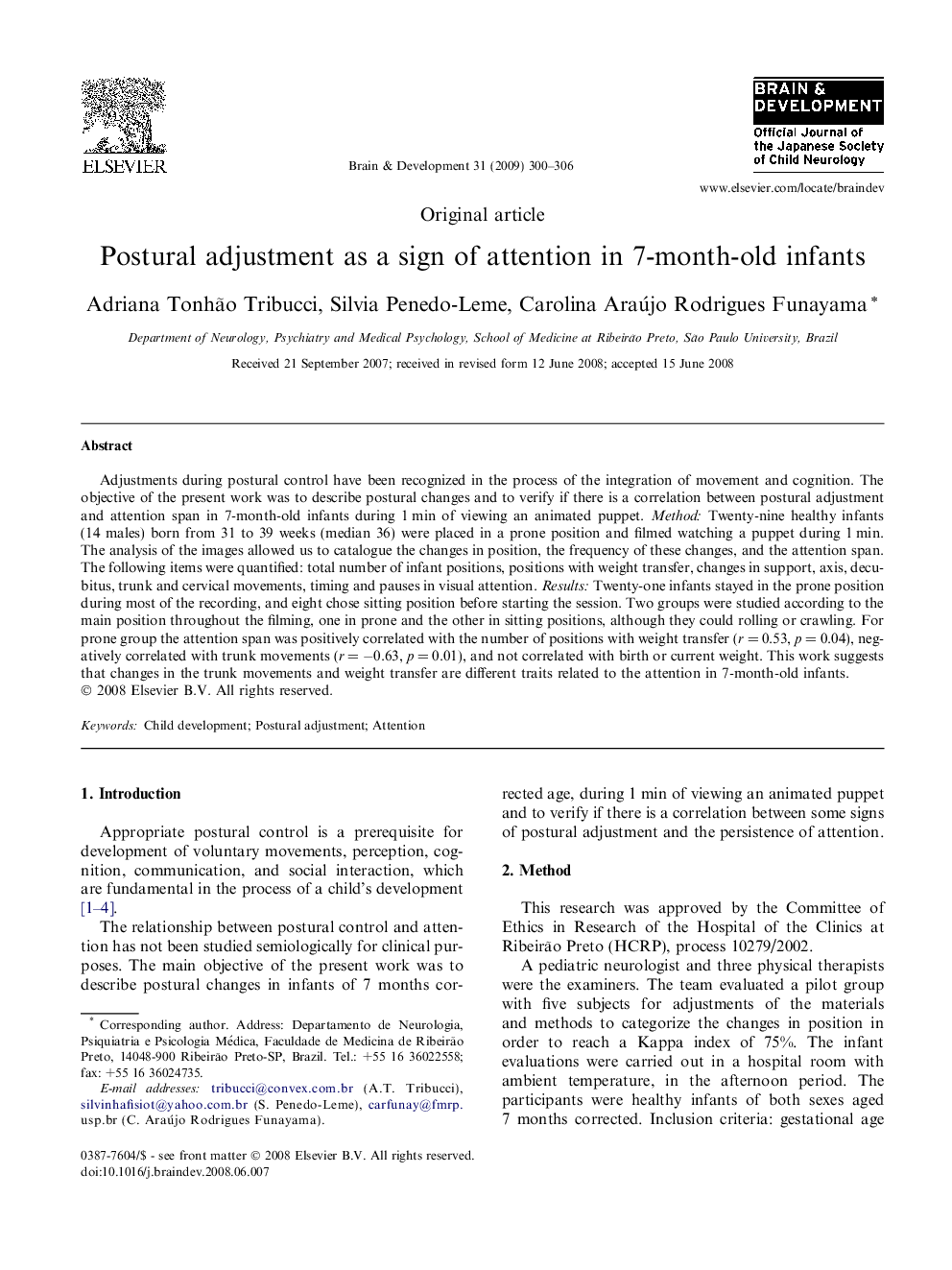| Article ID | Journal | Published Year | Pages | File Type |
|---|---|---|---|---|
| 3038130 | Brain and Development | 2009 | 7 Pages |
Adjustments during postural control have been recognized in the process of the integration of movement and cognition. The objective of the present work was to describe postural changes and to verify if there is a correlation between postural adjustment and attention span in 7-month-old infants during 1 min of viewing an animated puppet. Method: Twenty-nine healthy infants (14 males) born from 31 to 39 weeks (median 36) were placed in a prone position and filmed watching a puppet during 1 min. The analysis of the images allowed us to catalogue the changes in position, the frequency of these changes, and the attention span. The following items were quantified: total number of infant positions, positions with weight transfer, changes in support, axis, decubitus, trunk and cervical movements, timing and pauses in visual attention. Results: Twenty-one infants stayed in the prone position during most of the recording, and eight chose sitting position before starting the session. Two groups were studied according to the main position throughout the filming, one in prone and the other in sitting positions, although they could rolling or crawling. For prone group the attention span was positively correlated with the number of positions with weight transfer (r = 0.53, p = 0.04), negatively correlated with trunk movements (r = −0.63, p = 0.01), and not correlated with birth or current weight. This work suggests that changes in the trunk movements and weight transfer are different traits related to the attention in 7-month-old infants.
